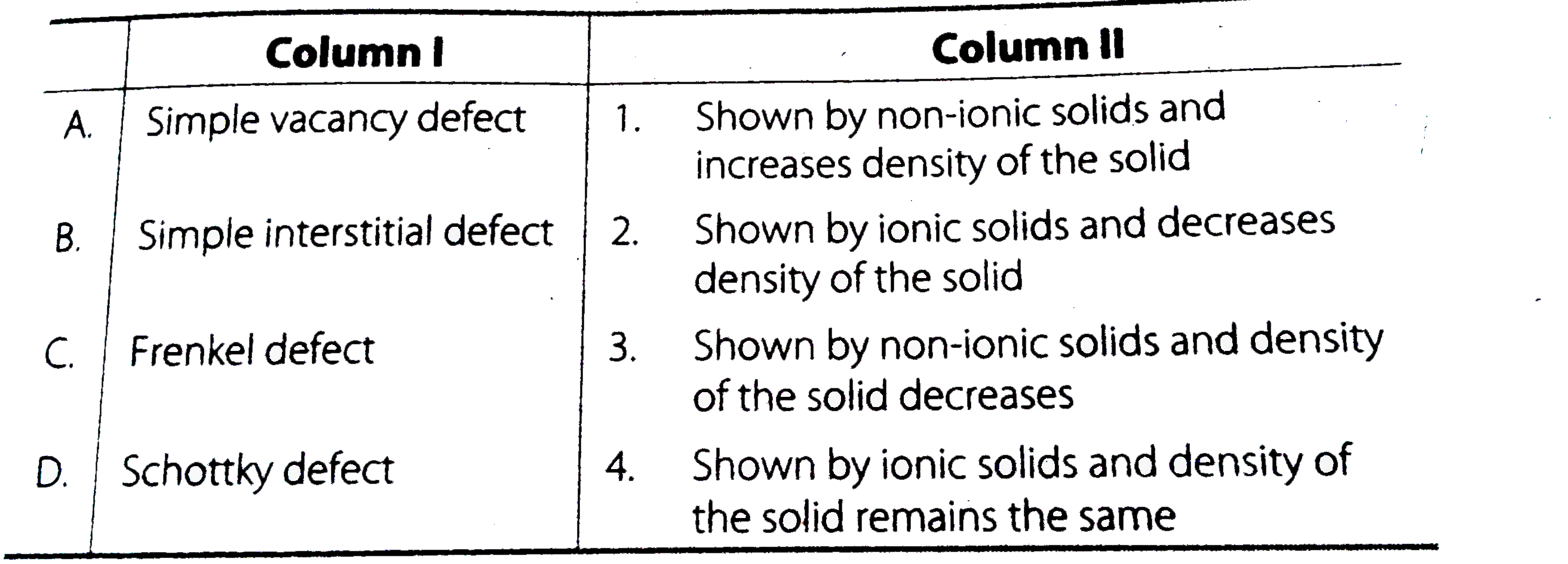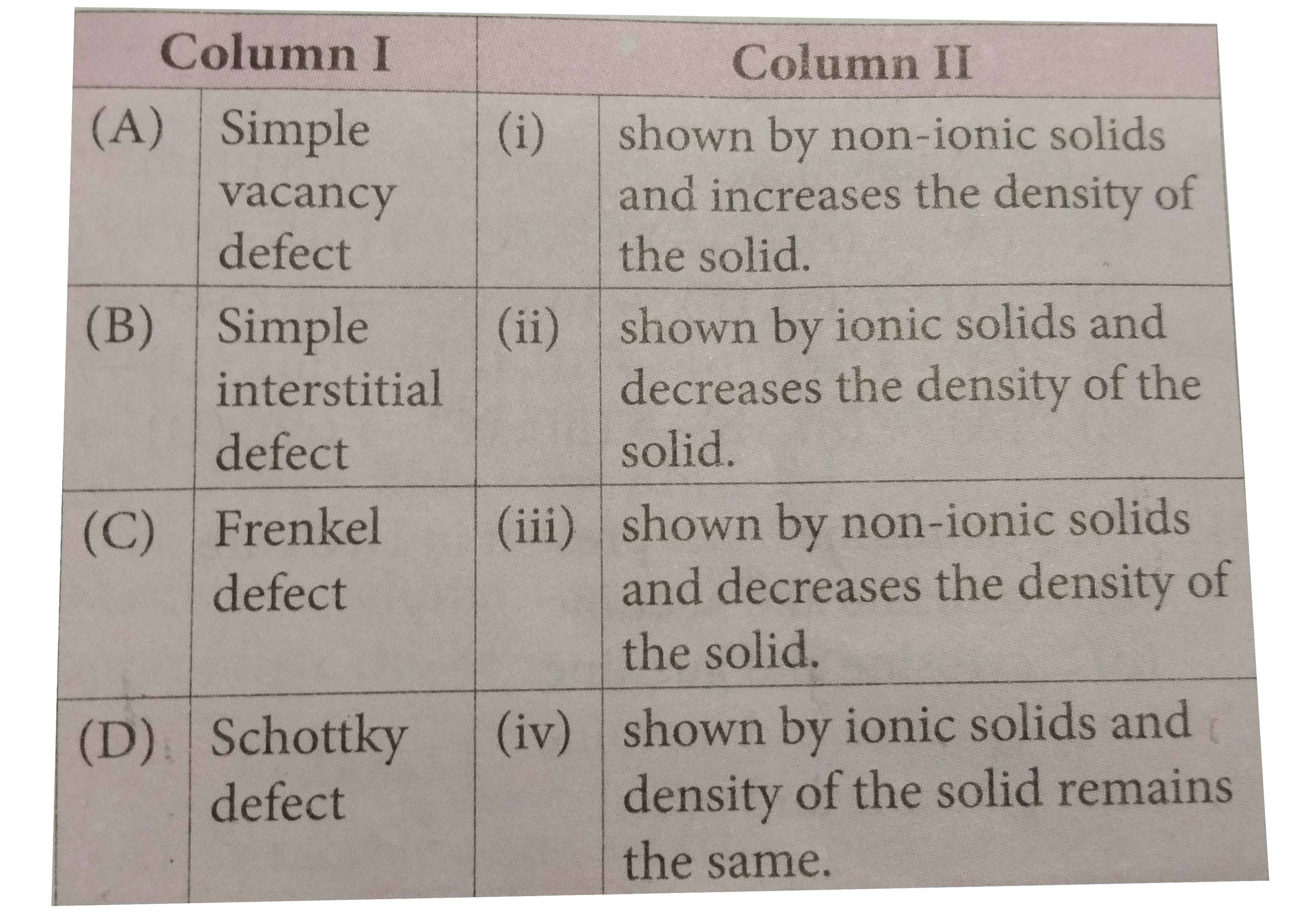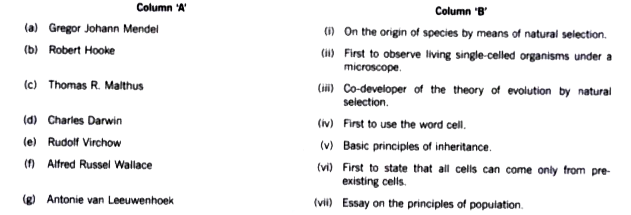match the defects given in column I with the statements in given Column I.

Video Solution
Text Solution
when some of lattice sites are vacant in any non- ionic said the crystal is said t have vacancy defect and due to decrease in number of particles present in crystal lattice the density of crystal decreases.

B . simple interstiital defect are shown by non- ionic solids in which constituent particles is displaced from its normal site to an interstitial site Hence density of soild increases .

C . Fremkel defect is shown by ionic solids in whcih smaller ions get dislocated from its normal site to its interstitial site which lead to decrease its density .

D. Schottky defect is shown by ionic solids in which equal number of cartion and anion get missed from ionic solids and thus. density of solid decreases.

|
Topper's Solved these Questions
- SOLID STATEBook:NCERT EXEMPLAR ENGLISHChapter:SOLID STATEExercise:long answer type questions
Explore 4 Videos
- SOLID STATEBook:NCERT EXEMPLAR ENGLISHChapter:SOLID STATEExercise:short answer type Questions
Explore 19 Videos
- POLYMERBook:NCERT EXEMPLAR ENGLISHChapter:POLYMERExercise:Long Answer Type Question
Explore 5 Videos
- SOLUTIONS Book:NCERT EXEMPLAR ENGLISHChapter:SOLUTIONS Exercise:LONG ANSWER TYPE QUESTIONS
Explore 8 Videos
Similar Questions
Knowledge Check
Match the defects gives in column I with statements given in column II and mark the appropriate choice.
 AA→iv,B→iii,C→ii,D→iBA→iii,B→iv,C→I,D→iiCA→iii,B→I,C→iv,D→iiDA→I,B→iii,C→iv,D→ii
AA→iv,B→iii,C→ii,D→iBA→iii,B→iv,C→I,D→iiCA→iii,B→I,C→iv,D→iiDA→I,B→iii,C→iv,D→ii
Match the reactions given in Column I with the statements given in Column II

View SolutionMatch the reactions given in Column I with the statements given in Column II

View SolutionMatch the scientists given in column 'A' with the statements given in column 'B'.

View SolutionMatch the entries in column II with the statements given in column I.

View SolutionMatch the reactions given in Column I with the suitable reagents given in Column II.

View SolutionMatch the statements given in Column I with the oxidation states given in Column II.

View SolutionMatch the statement given in Column I with the phenomenon given in Column II.

View Solution


